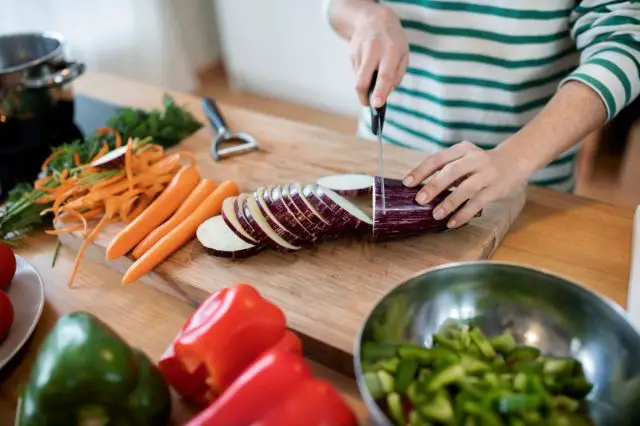Reducing food waste is not just a question of home economics; it’s a powerful act in favor of the planet. Every gesture counts, and it often starts with simple habits in the kitchen. The complete use of food, including the often neglected peelings, is part of this logic.
This article invites you to rediscover your peelings not as waste, but as culinary treasures, capable of transforming your dishes into truly gourmet experiences.
Why use peelings?
Are peelings really useful? The answer is yes! Rich in nutrients, they contain essential vitamins and minerals that are lost when we throw them away.
What’s more, by reducing our food waste, we’re acting directly on our ecological footprint, reducing the amount of waste that ends up in landfill.
But how do we ensure that these peelings are clean and ready to use? Careful cleaning under water, possibly with a brush, is all it takes to remove surface residues and pesticides.
This simple gesture ensures their safe use in our recipes, offering us a palette of unexplored flavors and textures.
How important is it to choose quality cookware?
Beyond the intelligent use of peelings and food scraps, the choice of kitchen utensils plays a crucial role in our move towards zero waste cooking. High-quality utensils are not only more pleasant to use, they can also influence the quality and taste of our dishes, as well as being more sustainable.
Well-sharpened knives, for example, enable precise and efficient cutting, reducing waste during food preparation. A good knife can turn vegetable peeling into a quick and easy task, encouraging you to use more of the food that would otherwise have been thrown away.
Likewise, high-quality cooking utensils ensure even cooking, which is essential for successful recipes using peelings or less noble parts of food, which often require special attention to get the best taste out of them.
So investing in sustainable cookware, made from environmentally-friendly materials, also helps to reduce our kitchen’s ecological footprint. Reusable products, such as silicone lids or glass containers, not only replace disposable items, but also better preserve the freshness of food, helping to reduce food waste.
How to prepare and store peelings for later use?
Storage plays a key role in peel management. For peelings that you don’t want to use immediately, there are several methods available.
Drying is ideal for fruit peelings such as apples or citrus fruits, which can then be used as natural flavourings for your teas and infusions.
Freezing is another option, particularly suitable for vegetable peelings, ready to be transformed into homemade stock at a moment’s notice.
Finally, pickling your peelings, especially those of root vegetables such as carrots or beet, can transform them into delicious, crunchy condiments.
5 recipe ideas using peelings
Zero waste cooking isn’t just about reducing our waste; it also invites us to rediscover the flavors and nutrients often overlooked in the parts of food we’re used to throwing away. Peelings, in particular, can be transformed into culinary treasures.
Here’s how you can incorporate them into your meals, from starter to dessert.
Turn peelings into crunchy snacks
Peel chips are a tasty, crunchy alternative to traditional snacks.
Whether using potato, carrot or beet peelings, the trick is to season them lightly with olive oil and your choice of spices before baking them in the oven until they reach crispy perfection.
Not only is this a delicious way to reduce waste, it’s also a great way to enjoy a fiber-rich appetizer.
Making pesto with vegetable peelings
Absolutely. Vegetable peel pesto is a great way to reuse peelings from carrots, zucchini and other vegetables.
Blend the peelings with walnuts, garlic, Parmesan cheese and olive oil for a rich, creamy pesto.
Use it as a side dish for pasta, toast, or even as a base for vinaigrettes.
Use a mixture of peelings to create a rich broth
A homemade peel broth is a perfect base for many recipes, from soups to stews. Keep your vegetable peelings, vegetable bits and even onion hulls in a bag in the freezer.
When you’re ready to make your broth, simply simmer them in water with herbs for a broth full of flavor and nutrients.
Use them to make tasty patties
Vegetable patties with peelings are not only delicious, they’re nutritious too. Mix the peelings with a binder, such as flour or egg, add spices to taste, and pan-fry.
It’s a great way to make the most of peelings and add an original touch to your meals.
Create a hot drink with fruit peelings
A fruit peel infusion is a comforting way to end your day. Use citrus or apple peels, add hot water, leave to infuse and enjoy. It’s a simple, delicious, zero-waste drink that lets you enjoy every last flavour of your fruit.
How to adopt a zero-waste kitchen?
Adopting a zero-waste approach to cooking involves much more than reusing peelings. It’s a mindset that encompasses meal planning, product selection and how you manage leftovers.
Here are a few tips to help you minimize your environmental impact while enjoying tasty, nutritious meals.
Why plan your meals to minimize waste?
Meal planning is key to reducing food waste. By planning ahead, you can buy only what you need, reducing the chances of letting unused food perish.
Think about flexible recipes that can accommodate different ingredients depending on what you have on hand.
Why choose local and seasonal produce?
Opting for local and seasonal produce doesn’t just help reduce your carbon footprint; it also ensures fresher, tastier ingredients.
Finally, seasonal produce is generally less packaged and more likely to come from sustainable sources, supporting the local economy and reducing packaging waste.
What tips do you have for cleverly reusing leftovers and peelings?
Be creative with your leftovers and peelings. Before you think about throwing them away, think about how a leftover can be used as the basis for a new meal.
Slightly wilted vegetables can be turned into soups, overripe fruit into smoothies, and leftover meat into toppings for pizzas or tacos.
The aim is to see beyond the initial state of the food and imagine its potential!
Conclusion
Zero waste cooking is more than just a trend; it’s a responsible approach that challenges us about our relationship with food and the environment. By incorporating peelings into our recipes, we enrich our diet with nutrients that are often overlooked, but we also help to significantly reduce food waste.







